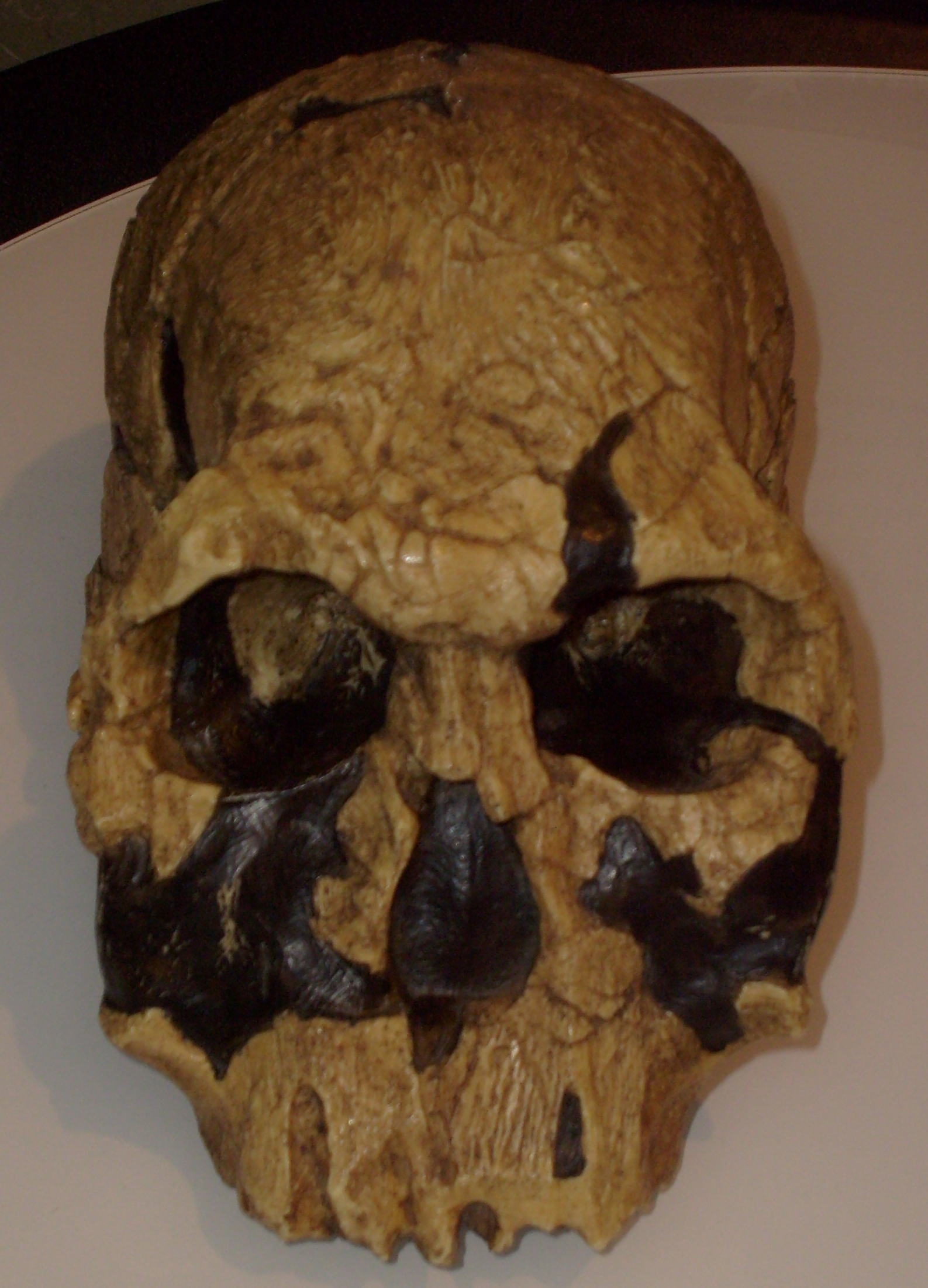- Homo rudolfensis
name = "Homo rudolfensis"
fossil_range =Pliocene
regnum =Animal ia
phylum = Chordata
classis =Mammal ia
ordo =Primate s
familia =Hominidae
genus = "Homo"
species = "H. rudolfensis"
binomial = †"Homo rudolfensis"
binomial_authority = Alexeev, 1986"Homo rudolfensis" is a
fossil hominin species discovered byBernard Ngeneo , a member of a team led by anthropologistRichard Leakey and zoologistMeave Leakey in 1972, atKoobi Fora on the east side of Lake Rudolf (nowLake Turkana ) inKenya . The scientific name "Homo rudolfensis" was proposed in 1986 by V. P. Alexeev for the specimen Skull 1470 (KNM ER 1470). Skull 1470 has an estimated age of 1.9 million years.Originally thought to be a member of the species "
Homo habilis ", the fossil was the center of much debate concerning its species. Assigned initially to "Homo habilis", the skull was at first incorrectly dated at nearly three million years old. This estimate, however, caused much confusion: the date would have made the skull older than any knownaustralopithecine , from which "Homo habilis" is thought to have descended.The differences in this skull, when compared to others of the "Homo habilis" species, are too pronounced, leading to the presumption of a "Homo rudolfensis" species, contemporary with "Homo habilis". It is not certain if "H. rudolfensis" was ancestral to the later species in "Homo", or if "H. habilis" was, or if some third species yet to be discovered was.As in the case of "H. habilis", there is large amount of controversy about the classification of "H. rudolfensis" into the "Homo" genus. Although no reliably associated postcranial remains have been discovered for "H. rudolfensis", it is thought that — like "H. habilis" — "H. rudolfensis" lacked many of the features unique to later
hominins (that is, creatures that include humans and their ancestors), such as slim hips for walking long distances, a sophisticated sweating system, narrow birth canal, legs longer than arms, noticeable whites in the eyes, smaller hairs resulting in naked appearance and exposed skins, etc.Fact|date=February 2007In March 2007, a team led by Timothy Bromage, an anthropologist at New York University, reconstructed the skull of KNM-ER 1470. The new construction looks very ape-like and the cranial capacity based on the new construction is downsized from 752 cubic centimeters to about 526 cm³. Bromage said his team’s reconstruction includes biological principles not known at the time of the skull’s discovery, which state that a mammal’s eyes, ears and mouth must be in precise relationships relative to one another. [cite web | author = Than, Ker | date =
2007-03-29 | url = http://www.livescience.com/humanbiology/070329_rudolf_reconstruct.html | title = Controversial Human Ancestor Gets Major Facelift | work = [http://www.livescience.com/ LiveScience] | accessdate = 2007-04-28]ee also
*
Cranial capacity
*Koobi Fora
*List of fossil sites "(with link directory)"
* List of hominina (hominid) fossils "(with images)"References
External links
* [http://www.archaeologyinfo.com/homorudolfensis.htm Archaeology Info]
* [http://www.sciencedaily.com/releases/2001/03/010322232234.htm Science Daily article]
* [http://www.talkorigins.org/faqs/homs/1470.html Talk Origins - Skull KNM-ER 1470]
* [http://www.mnh.si.edu/anthro/humanorigins/ha/rud.html Smithsonian]
Wikimedia Foundation. 2010.

